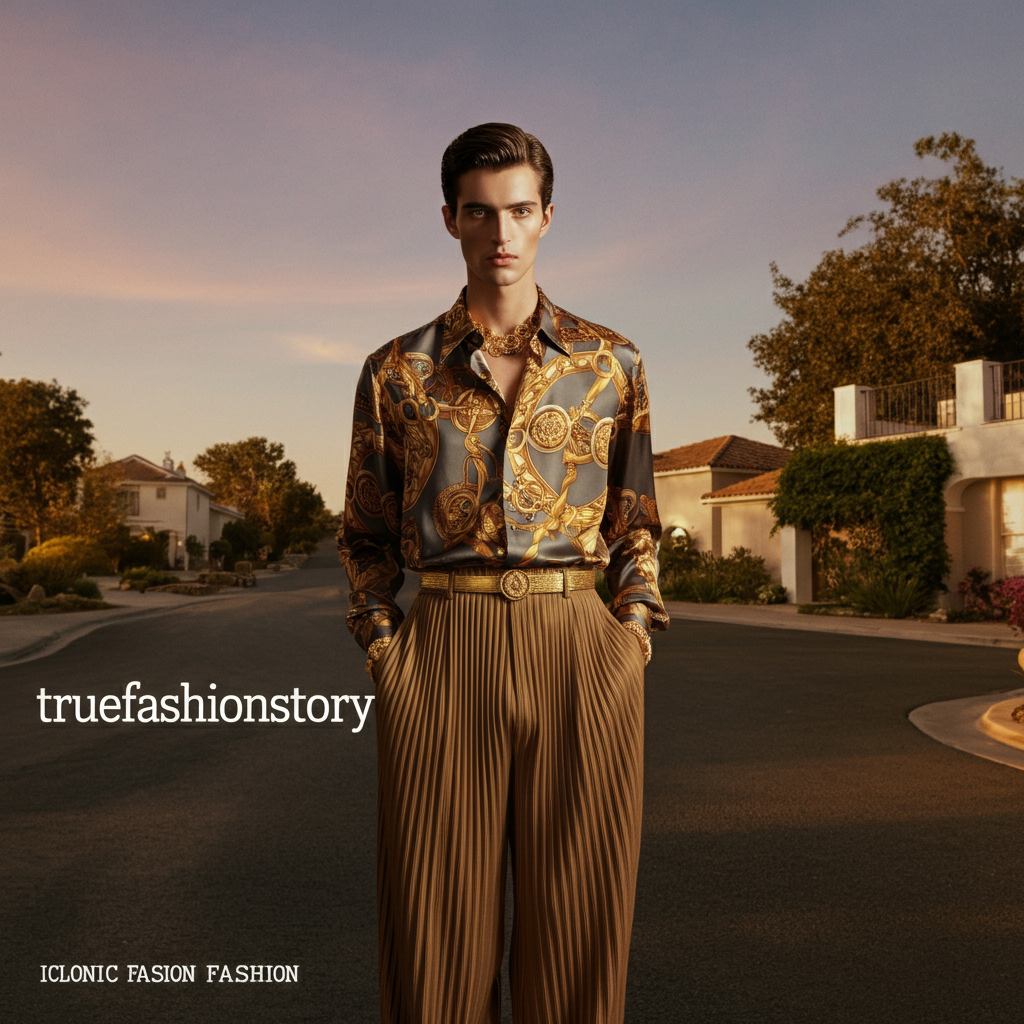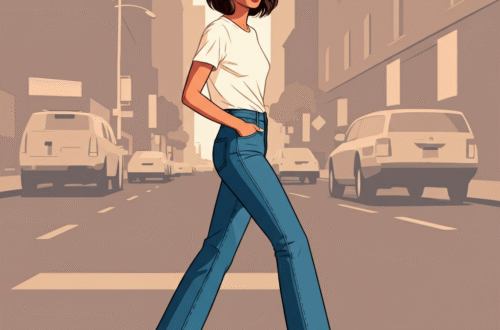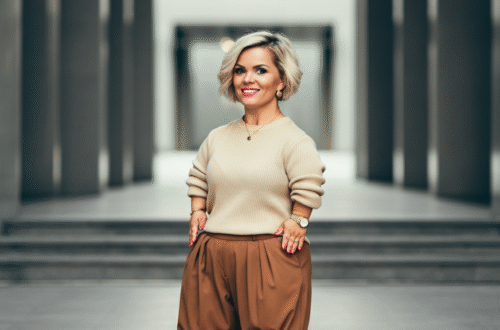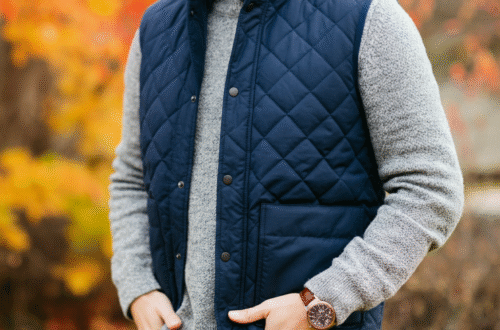The world of television has given us many iconic characters, but few have left a mark on pop culture quite like Tony Soprano.When we think of The Sopranos, we often recall the gripping storylines, complex characters, and unforgettable dialogue. However, another crucial element cemented the show’s legacy: the distinct Tony Soprano fashion. More than just clothing, Tony’s wardrobe was a character in itself, telling a story of power, comfort, and the internal conflicts of a modern mob boss. It was a masterclass in character-driven style that continues to influence menswear decades later.
This article will explore the key elements of Tony Soprano’s style, from his signature polo shirts to his luxurious leather jackets. We will break down how his clothing choices reflected his personality and the different roles he played as a family man and a “waste management consultant.” You’ll discover how to incorporate his comfortable yet commanding look into your own wardrobe and understand why this seemingly simple style remains so powerful and relevant.
Key Takeaways
- Comfort is King: Tony Soprano’s fashion choices prioritized comfort, showcasing that style doesn’t have to be restrictive.
- The Power of the Polo: The short-sleeved, patterned knit polo shirt was the cornerstone of his casual wardrobe.
- Duality in Dress: His style shifted between casual, approachable family-man attire and more formal, intimidating business wear.
- Subtle Luxury: Tony’s look was defined by high-quality materials like leather, silk, and gold, which signaled wealth without being overly flashy.
- Enduring Influence: The “mob boss aesthetic” popularized by Tony continues to inspire modern menswear trends, from oversized silhouettes to bold patterns.
Decoding the Don: What Defined Tony Soprano’s Style?
Tony Soprano’s wardrobe was a carefully curated reflection of his complex life. It was a blend of suburban dad comfort and understated mob boss authority. Unlike the flashy, pinstriped gangsters of old Hollywood, Tony’s look was grounded in a more believable, modern reality. Costume designer Juliet Polcsa brilliantly used clothing to signal Tony’s mood, intentions, and the different hats he wore daily. He could be intimidating in a tailored suit one moment and approachable in a bowling shirt the next.
This duality is central to understanding Tony Soprano fashion. His clothes had to work for a therapy session, a family barbecue at his suburban home, and a tense meeting at the Bada Bing! strip club. This need for versatility resulted in a look that was practical yet powerful. He favored loose-fitting garments that allowed for ease of movement and projected a relaxed confidence. This intentional choice made him seem less like a caricature and more like a real person, which is one reason audiences connected with him so deeply.
The Signature Short-Sleeved Shirt
No single garment is more associated with Tony Soprano than the short-sleeved, button-up or knit polo shirt. These shirts were the workhorses of his wardrobe, often featuring bold, abstract, or geometric patterns. They were typically made of silk, rayon, or a comfortable knit blend, giving them a relaxed drape that perfectly suited his large frame. These weren’t your average department store polos; they were statement pieces that conveyed a sense of casual authority.
The patterns were key. They were often colorful and eye-catching, adding a touch of personality to an otherwise simple outfit. This choice demonstrated that Tony wasn’t afraid to stand out, but he did so on his own terms. Paired with pleated trousers and loafers, the short-sleeved shirt created a silhouette that was both commanding and comfortable. It became his unofficial uniform for conducting business in a low-key setting, proving that you don’t need a suit to project power.
Bowling Shirts vs. Knit Polos
While often grouped together, Tony wore two distinct types of short-sleeved shirts.
- Bowling Shirts: These are typically button-down shirts made from silk or rayon with a camp collar. They often feature vertical panels or bold, all-over prints.
- Knit Polos: These are pullover shirts made from a heavier knit fabric, similar to a sweater. They usually have a ribbed collar, cuffs, and hem, giving them a more structured yet equally comfortable feel.
The Importance of Pleated Trousers
To balance his vibrant shirts, Tony almost exclusively wore pleated trousers. These pants, usually in neutral colors like khaki, gray, or black, provided a solid foundation for his outfits. The pleats were a crucial detail, offering more room and comfort around the waist and thighs, which complemented his larger build. This was a practical choice that also happened to be a popular menswear trend of the late 1990s and early 2000s.
The cut of his trousers was always relaxed, never tight or slim-fitting. This loose silhouette contributed to his imposing physical presence while reinforcing the theme of comfort. Gabardine and wool were common fabric choices, materials known for their durability and classic appearance. The combination of a patterned shirt and simple, pleated trousers created a consistent and recognizable uniform for the character, a look that was both approachable and subtly powerful. It was the perfect attire for a man straddling the worlds of family life and organized crime.
The Two Sides of Tony: Casual vs. Business Attire
Tony Soprano’s wardrobe was a tale of two distinct styles: his off-duty, casual look and his more formal business attire. This separation was a deliberate choice that helped define the different facets of his personality. One was the family man grilling burgers in the backyard; the other was the boss making decisions that affected lives and fortunes.
His Casual, At-Home Look
When he was at home, with his family, or in a therapy session with Dr. Melfi, Tony’s style softened. This is where the iconic bathrobe made its appearance. The plush, white terrycloth robe became a symbol of his vulnerability and his domestic side. It was in this robe that he often grappled with his anxieties, making him appear more human and relatable.
Beyond the robe, his at-home attire consisted of tracksuits, polo shirts, and comfortable slacks. The tracksuit, in particular, became a key part of the Tony Soprano fashion lexicon. It represented a blend of Italian-American heritage and suburban leisure. Whether he was picking up the morning paper or having a tense conversation in his kitchen, the tracksuit was his go-to for comfort and ease. This casual look made him seem like any other suburban dad, effectively masking the darker aspects of his professional life.
Power Dressing: The Business Suit and Leather Jacket
When it was time for serious business, Tony’s style shifted accordingly. He would trade his casual shirts for tailored suits, leather jackets, and long-sleeved dress shirts. His suits were never overly flashy. He favored dark, solid colors like charcoal gray, navy, and black, often with subtle pinstripes. The fit was classic—strong in the shoulders but never tight, projecting authority without appearing ostentatious. This was a deliberate move away from the flamboyant “gangster” suits of cinematic history.
The leather jacket was another crucial piece of his power-dressing arsenal. A high-quality, black or brown leather blazer or car coat instantly added a layer of intimidation to his look. Leather signifies toughness, luxury, and rebellion, all elements present in Tony’s character. When he wore a leather jacket, it was a clear signal that he was in charge. Paired with a mock-neck sweater or a dark dress shirt, it created a sleek, menacing silhouette that left no doubt about who was the boss. You can find more insights on iconic styles at the truefashionstory.comBlog.
The Accessories: Finishing the Look
Accessories were the final touch that pulled the Tony Soprano fashion aesthetic together. They were symbols of his status and wealth, chosen carefully to project an image of success.
The Role of Gold Jewelry
Gold was Tony’s metal of choice. He was rarely seen without his signature gold chain and pinky ring. The heavy, yellow gold chain, often worn over a polo shirt or peeking out from under a dress shirt, was a classic symbol of mob status. It was a direct, unapologetic display of wealth. The gold pinky ring, often adorned with a ruby or diamond, was another essential piece. In many cultures, a pinky ring signifies family and status, making it a fitting accessory for the head of the DiMeo crime family. His gold Rolex Day-Date watch, known as the “President,” was the ultimate status symbol, silently communicating his power and success.
Footwear: From Loafers to Dress Shoes
Tony’s footwear choices were always practical and classic. For his casual looks, he favored comfortable leather loafers. These were easy to slip on and off and paired perfectly with his pleated trousers and polo shirts. Gucci loafers were a particular favorite, representing a quiet luxury that fit his aesthetic. When he dressed up, he opted for classic leather dress shoes, usually in black or brown. Like the rest of his wardrobe, his shoes were high-quality and understated, focusing on craftsmanship rather than flashy trends.
How to Get the Tony Soprano Look Today
The enduring appeal of Tony Soprano fashion means that many of its key elements can be easily incorporated into a modern wardrobe. The “mob boss aesthetic” is currently experiencing a revival, with a focus on relaxed fits, bold patterns, and luxurious textures.
Modernizing the “Mob Boss Aesthetic”
To adopt Tony’s style without looking like you’re wearing a costume, focus on the principles rather than a direct copy.
- Embrace the Knit Polo: Swap out your basic t-shirts for high-quality knit polos. Look for interesting textures and subtle patterns.
- Find Your Perfect Trousers: Instead of pleated gabardine, opt for a modern, relaxed-fit trouser in wool, linen, or corduroy. Ensure they are comfortable and have a clean drape.
- Invest in a Statement Jacket: A quality leather jacket or a stylish track jacket can serve as a versatile top layer.
- Accessorize with Confidence: A simple gold chain or a classic watch can add a touch of Soprano-style confidence to any outfit.
The table below breaks down how to update key pieces from Tony’s wardrobe for a contemporary look.
|
Tony’s Original Piece |
Modern Alternative |
Why it Works |
|---|---|---|
|
Patterned Silk Camp Shirt |
Textured Knit Polo or Linen Button-Up |
Offers a similar relaxed vibe with a more current texture. |
|
Pleated Gabardine Trousers |
Relaxed-Fit Wool or Chino Trousers |
Provides comfort and a loose silhouette in a modern cut. |
|
Heavy Gold Chain |
A Thinner, Tasteful Gold or Silver Chain |
Subtly nods to the original look without being overly bold. |
|
Classic Leather Blazer |
Suede Bomber Jacket or a Modern Leather Car Coat |
Updates the silhouette while retaining the luxurious feel. |
|
Full Tracksuit |
Elevated Track Jacket with Jeans or Tailored Sweats |
Separates the pieces for a more versatile, less uniform look. |
The Lasting Influence of Tony Soprano Fashion
Why does Tony Soprano’s style still resonate with so many people today? It’s because it was authentic. His clothing was never just about looking good; it was about reflecting the man he was. The comfort, the subtle luxury, and the clear distinction between his personal and professional life made his style believable. The show’s popularity brought this specific brand of suburban, Italian-American style into the mainstream, and its influence can still be seen in menswear.
Designers and brands continue to draw inspiration from the show’s aesthetic, releasing collections with camp-collar shirts, relaxed-fit trousers, and gold jewelry. The rise of “quiet luxury” and more relaxed office dress codes also aligns perfectly with the principles of Tony’s wardrobe. His style proved that confidence is the best accessory and that true power doesn’t need to shout. It was a masterclass in character study through costume, leaving a permanent mark on both television and fashion.
Conclusion
The legacy of Tony Soprano fashion is a testament to the power of thoughtful costume design. It went beyond mere clothing to become an integral part of the character, communicating his inner world without a single word of dialogue. From the casual comfort of his knit polos and tracksuits to the understated authority of his suits and leather jackets, every piece told a story. His style was a blend of approachability and intimidation, perfectly mirroring the central conflict of his life. As trends come and go, the core principles of Tony’s wardrobe—comfort, quality, and confidence—remain timeless, ensuring that the Don’s style will continue to inspire for years to come.
Frequently Asked Questions (FAQ)
Q1: What kind of shirts did Tony Soprano wear?
Tony Soprano was famous for his short-sleeved shirts, particularly patterned silk or rayon camp-collar shirts (often called bowling shirts) and textured knit polos. These shirts were central to his casual, everyday look.
Q2: What brand of clothing did Tony Soprano wear?
While specific brands were not always highlighted, his style reflected high-quality, luxury goods. He was often seen in pieces consistent with brands like Gucci (specifically loafers), Brioni (for suits), and he famously wore a Rolex Day-Date “President” watch. The costume designer, Juliet Polcsa, sourced and custom-made many pieces to perfect the look.
Q3: How do I dress like Tony Soprano?
To dress like Tony Soprano, focus on relaxed-fit, comfortable clothing. Start with a patterned knit polo or a camp-collar shirt, pair it with pleated or loose-fit trousers, and finish with leather loafers. Accessorize with a gold watch and a simple chain. The key is to project confidence and prioritize comfort.
Q4: What is the “mob boss aesthetic”?
The “mob boss aesthetic,” heavily influenced by Tony Soprano, is a style characterized by a mix of casual luxury and understated power. Key elements include open-collar shirts, tracksuits, gold jewelry, leather jackets, and relaxed-fit tailoring. It avoids overly flashy trends in favor of high-quality materials and confident silhouettes.





